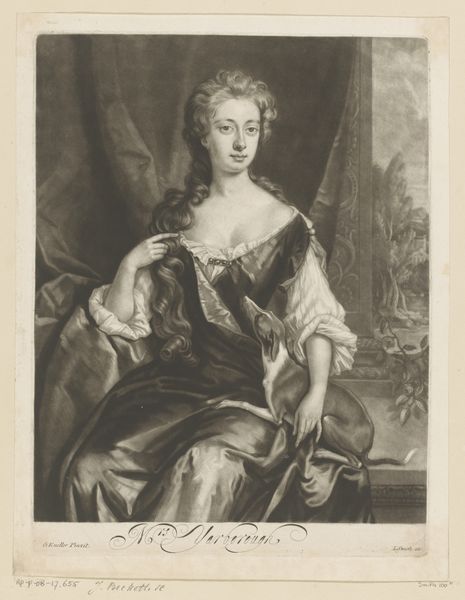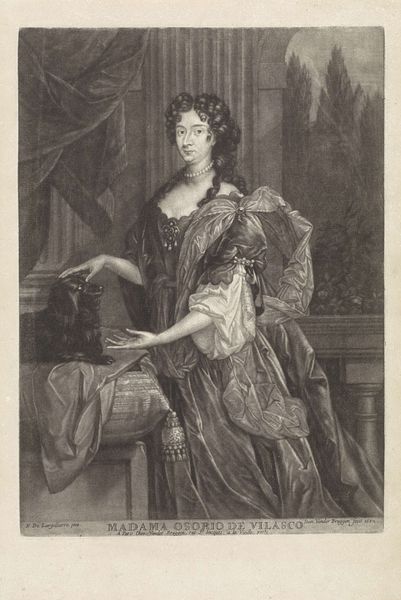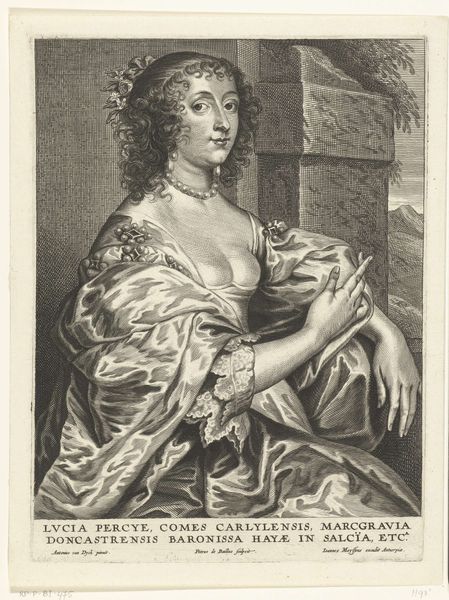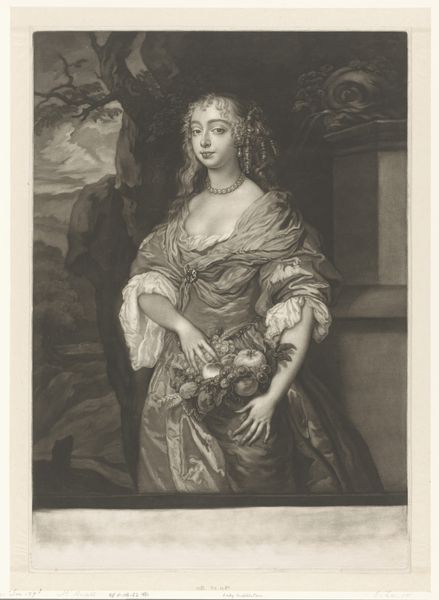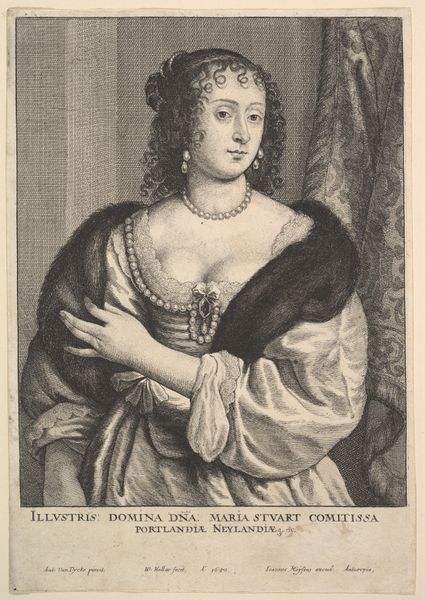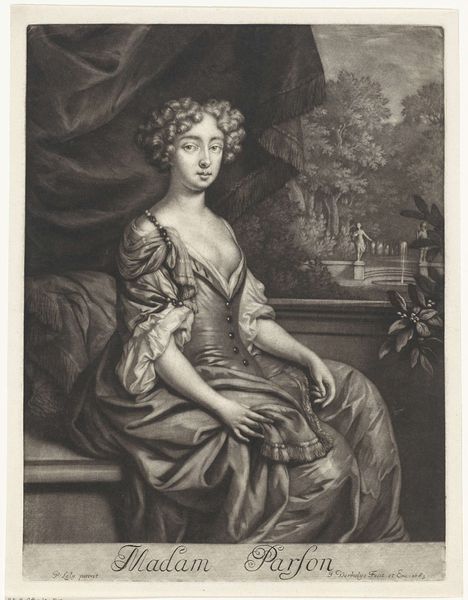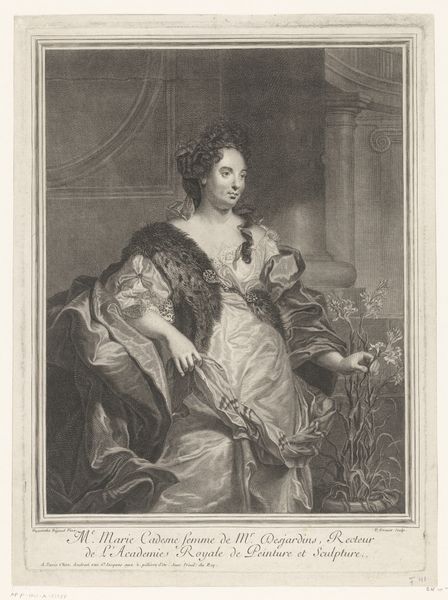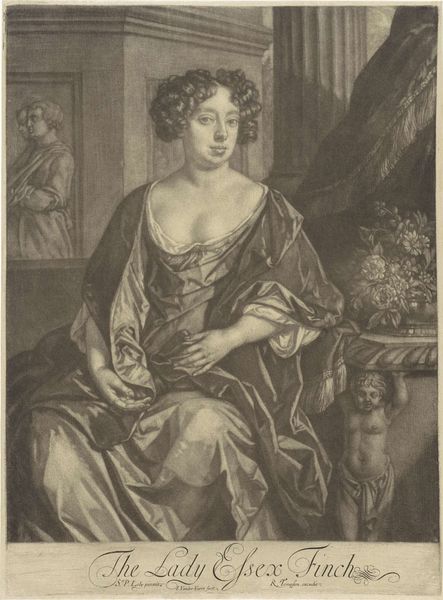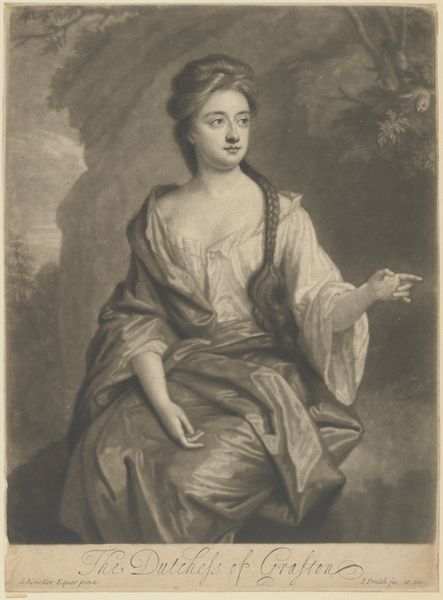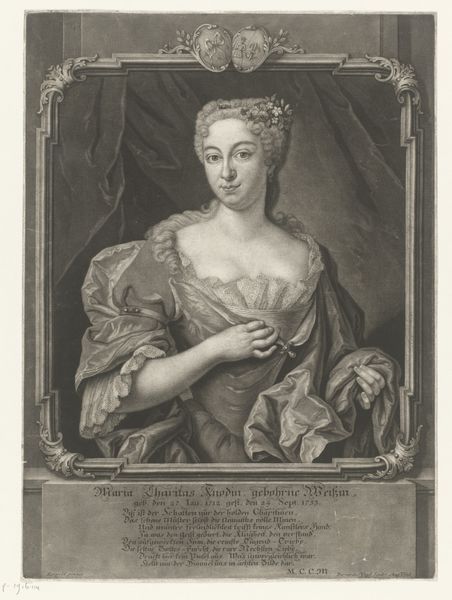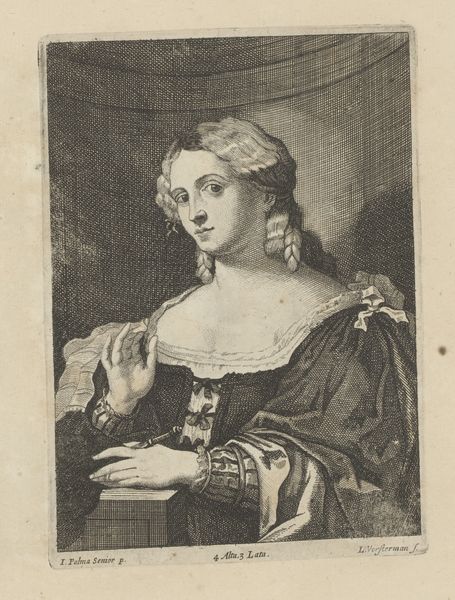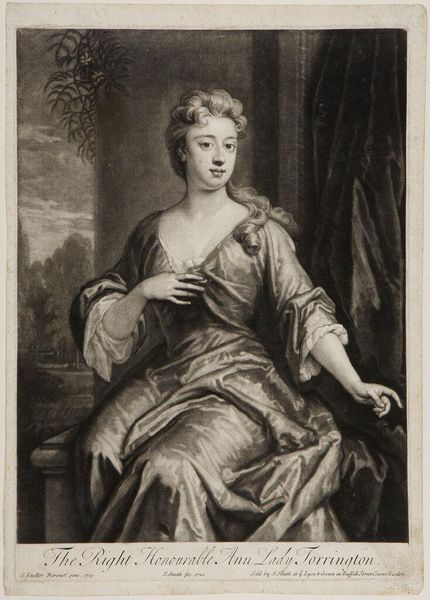
print, engraving
#
portrait
#
baroque
# print
#
figuration
#
academic-art
#
engraving
Dimensions: height 504 mm, width 355 mm
Copyright: Rijks Museum: Open Domain
Curator: Look at the dramatic interplay of light and shadow in this engraving! The piece is attributed to James McArdell; it’s a portrait of Elizabeth Hamilton, but presented as Saint Catherine. It dates from about 1745 to 1765. Editor: It's immediately striking. There's a tension in the way she is presented, as the subject seems to exist in a complex dialogue with both classical iconography and emerging modern portraiture conventions of the time. The almost melancholic facial expression complicates the otherwise triumphant imagery traditionally associated with the saint. Curator: Exactly. Elizabeth Hamilton exists as an individual, as a woman of social standing, and then layered within all of this is the allegory, the clear visual reference to the myth of Saint Catherine, but the social context provides yet another dimension. Aristocratic women of this era would often align themselves with powerful female figures from history and religion to augment their power. Editor: Yes, and McArdell is truly a master of mezzotint. Note how he creates such nuanced gradations, drawing from darkness such a lifelike image. Consider, too, the classical structure in the background against the heavy folds of the curtain, the contrast heightening our focus on Hamilton. Curator: And the very presence of that symbolic column in relation to a women of the period raises interesting questions about societal support and perceived stability. Hamilton holds the quill as Saint Catherine holds the wheel—an explicit redirection of masculine power into the hands of a female subject. Editor: Looking again, there’s also something about the texture. McArdell truly simulates textures of skin, fabric, and even air. This is an incredible feat. It’s more than symbolic, it’s about conveying lived realities. Curator: It is an important representation. It reframes our understanding of art history through the lens of gender, class, and the politics of image-making. It highlights the vital role women played in shaping cultural and spiritual narratives, claiming their place in a society built around male power structures. Editor: By giving attention to these elements we may move beyond traditional interpretations. The focus isn't simply on its classical elements, but also on the power of textures to bring social narratives to the fore. Curator: Ultimately, it becomes more than a Baroque portrait; it serves as a lens through which to dissect prevailing societal norms and class-defined identities.
Comments
No comments
Be the first to comment and join the conversation on the ultimate creative platform.
